Kingston Guitars, particularly those hailing from the mid-1960s, often fly under the radar in the vintage guitar market. It’s easy to get caught up in the mystique of artist-associated instruments and overlook guitars like this gem – a Kawai-built Kingston S4T from the mid-60s, produced in two subtly different variations around 1965-1967. But serious players in the know understand: spotting one of these models is like striking gold. If you encounter a Kingston guitar from this era, especially the S4T, take note – you absolutely can’t go wrong adding it to your collection. Forget the truss rod issues that plagued earlier 60s Kawai models; these guitars are built for smooth playability. With minimal setup effort, you can achieve incredibly low action on a Kingston S4T.
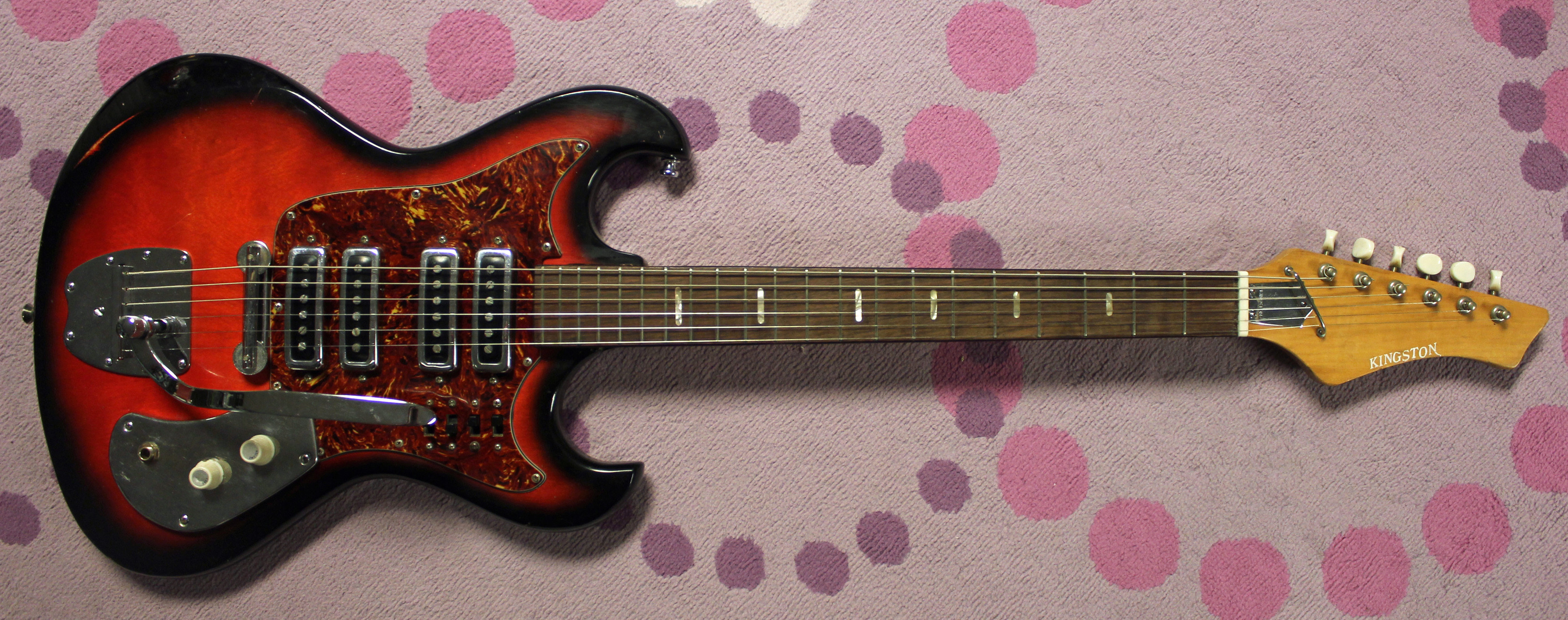 Close-up of the body and pickups of a vintage Kingston S4T guitar, highlighting its classic design and potentially great sounding units.
Close-up of the body and pickups of a vintage Kingston S4T guitar, highlighting its classic design and potentially great sounding units.
The pickups on these Kingston S4T and S2T models are truly exceptional. In fact, Kawai pickups from the early to mid-60s consistently deliver a tone that many players, including seasoned professionals, find incredibly appealing. While debates about preferences are endless, it’s worth noting that the Kingston S4T was rumored to be a favorite of the legendary Hound Dog Taylor. Discussions often arise regarding headstock and pickguard discrepancies compared to album covers, but fundamentally, these Kingston guitars remain consistent in quality and sonic character. And it’s safe to assume Hound Dog Taylor prioritized tone and playability over minor cosmetic variations.
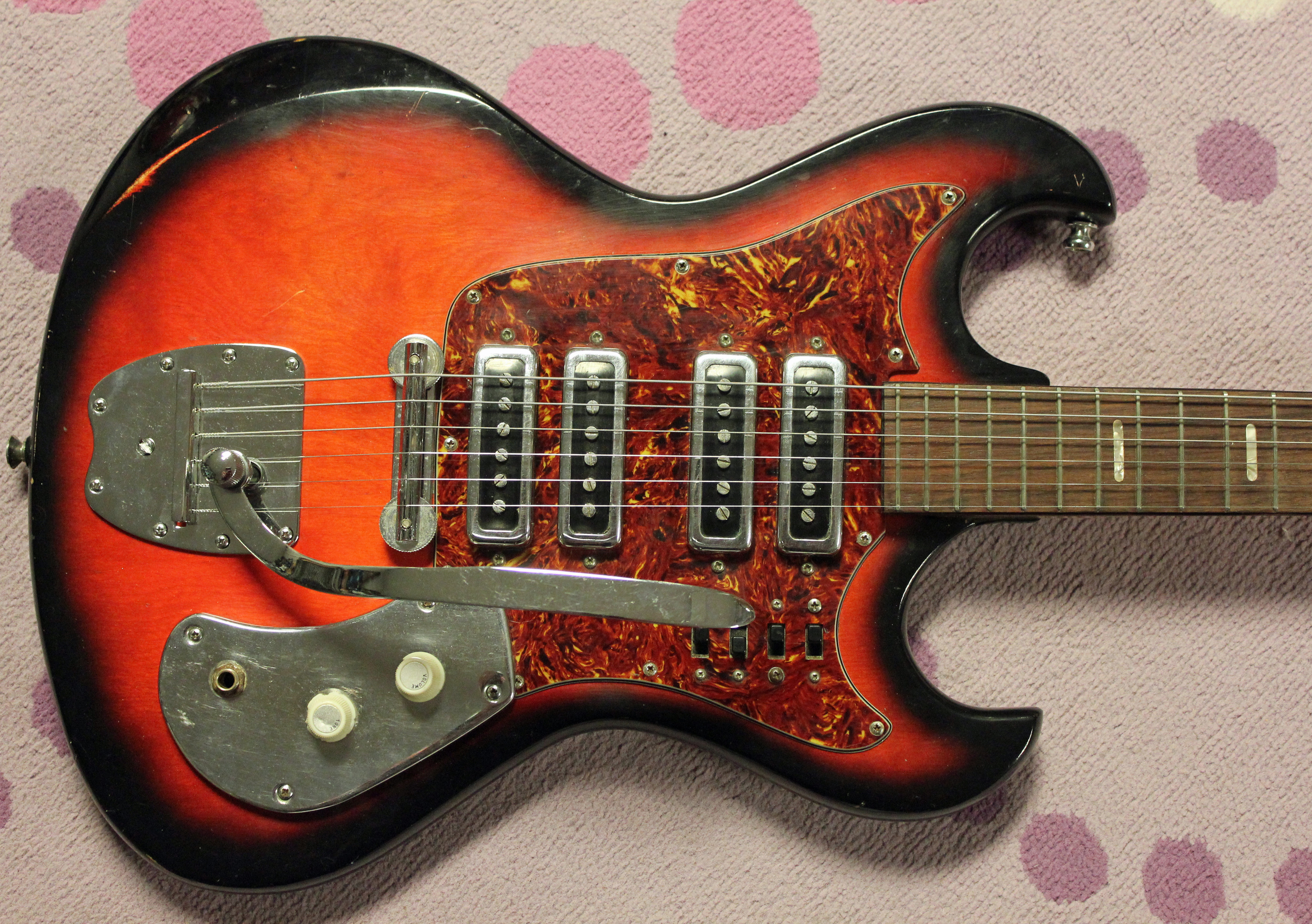 A detailed shot of the Kingston S4T guitar's pickups and controls, emphasizing the quality and vintage aesthetics of these components.
A detailed shot of the Kingston S4T guitar's pickups and controls, emphasizing the quality and vintage aesthetics of these components.
One of the most significant distinctions for players lies in the neck profiles of these Kingston S4T guitars. The earlier iterations featured a different headstock shape and utilized a different wood, resulting in a chunkier neck profile favored by some. If you prefer a substantial neck feel, seek out a 1965 model. Conversely, if you gravitate towards thinner necks, the maple neck found on slightly later 60s Kingston S4T guitars will be a perfect fit.
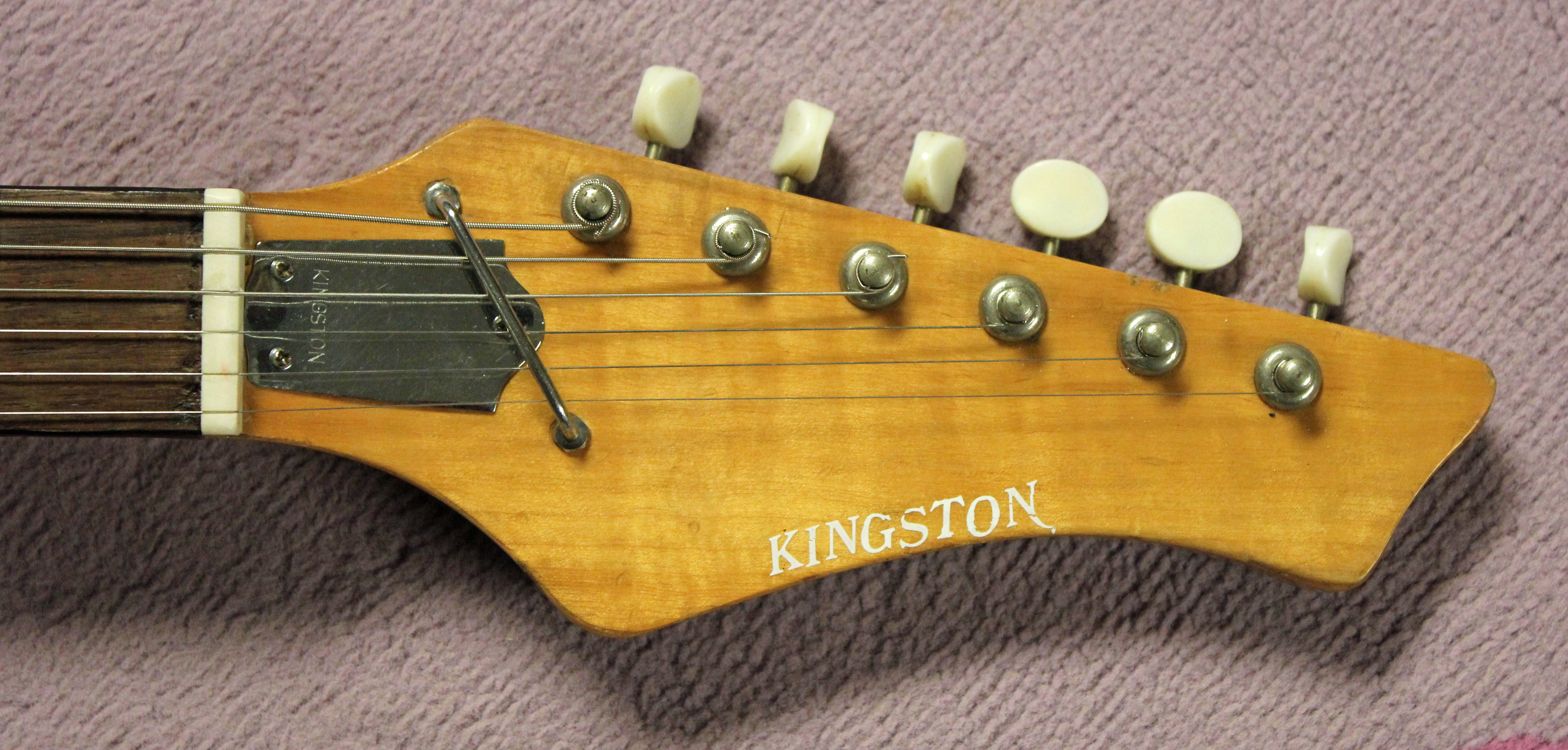 Side view of the neck and headstock of a Kingston S4T guitar, showcasing the maple wood and the headstock design that varies across production years.
Side view of the neck and headstock of a Kingston S4T guitar, showcasing the maple wood and the headstock design that varies across production years.
During this golden era, Kawai maintained solid wood construction for their Kingston guitars. This commitment to quality materials contributes to the remarkable durability of these instruments. This particular Kingston S4T model exhibits beautiful wear, a testament to its history and the affection of its previous owner – a detail that resonates with vintage guitar enthusiasts.
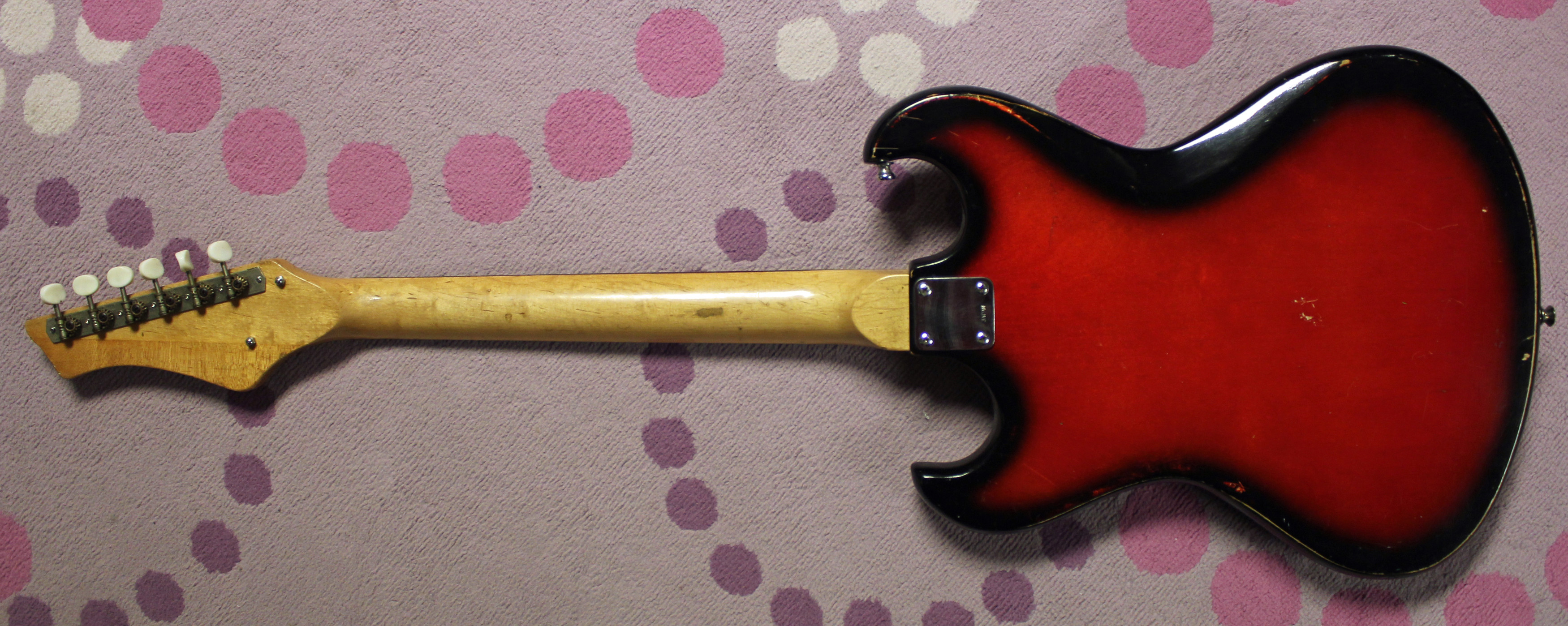 A full body shot of a worn vintage Kingston S4T guitar, highlighting the solid wood construction and the appealing signs of use and age.
A full body shot of a worn vintage Kingston S4T guitar, highlighting the solid wood construction and the appealing signs of use and age.
The 1960s saw Kawai producing guitars in their established piano factories in Hamamatsu, Japan. The finishes applied to these early Kawai-made Kingston guitars are consistently impressive, often displaying refined touches in the initial coats. Kawai’s experienced workforce, skilled in piano manufacturing, smoothly transitioned their expertise to guitar production. This background in crafting high-quality, expensive pianos undoubtedly contributed to the quality found in Kingston guitars of this period.
 Close-up of the Kingston S4T guitar's body finish and hardware, emphasizing the quality of the finish and the overall craftsmanship from the Kawai factory.
Close-up of the Kingston S4T guitar's body finish and hardware, emphasizing the quality of the finish and the overall craftsmanship from the Kawai factory.
Examining the headstock construction reveals a less favored cost-saving technique: gluing the lower portion onto the headstock. This method, implemented as the 1960s progressed and American importers pushed for lower prices, unfortunately, sometimes leads to separation at that joint. While a minor flaw in some guitars, it is a detail to be aware of when inspecting a vintage Kingston guitar.
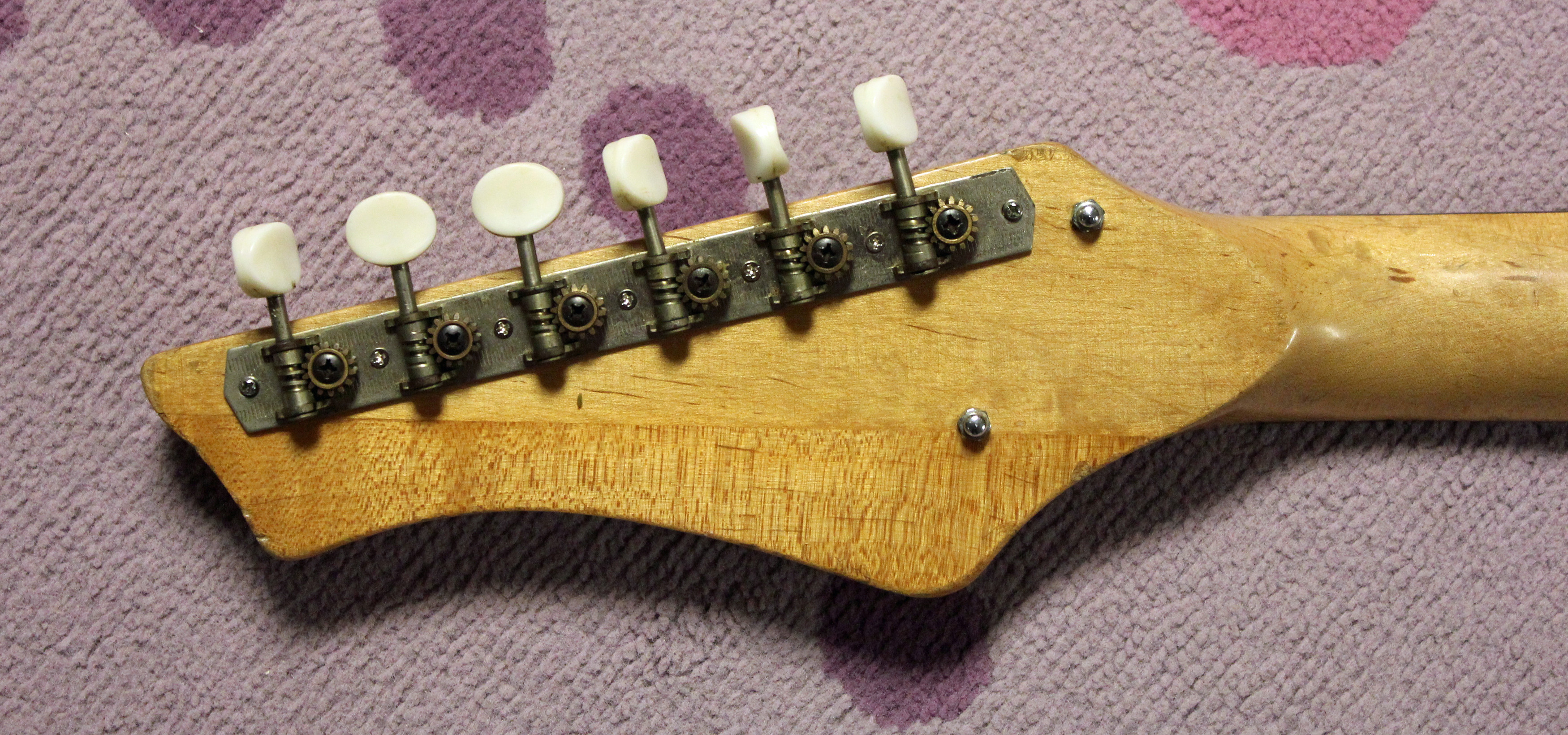 Detailed view of the Kingston S4T headstock, pointing out the glued joint and the potential for separation, a cost-cutting measure in later models.
Detailed view of the Kingston S4T headstock, pointing out the glued joint and the potential for separation, a cost-cutting measure in later models.
Despite minor cost-cutting measures implemented later in the decade, mid-60s Kingston guitars, especially the S4T model, remain outstanding instruments. They offer incredible value, boasting fantastic pickups, playable necks (in varying profiles to suit preferences), solid construction, and a unique vintage charm. If you’re seeking a vintage guitar that delivers tone and playability without breaking the bank, a Kingston guitar from this era is a seriously worthwhile contender and a hidden gem waiting to be rediscovered.

